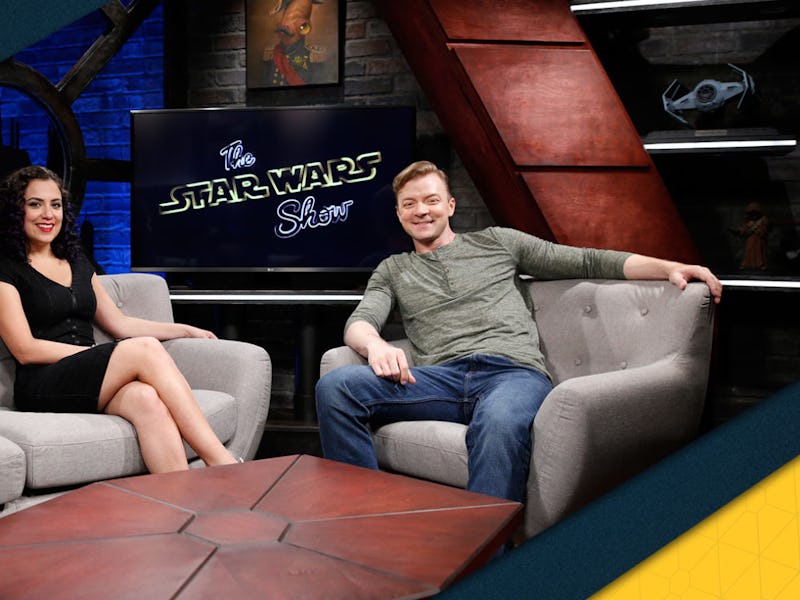The 'Star Wars' Bubble Is a Myth, Whether You Watch 'The Star Wars Show' or Not
The new fan-centric show shows that 'Star Wars' overload might not be a bad thing.

Last week, StarWars.com launched The Star Wars Show, a weekly mini-variety YouTube series meant to celebrate all things from the galaxy far, far away with kitschy videos, conversations with special guests, and other various segments.
It’s a show directly aimed at fans, but its nearly nine-minute first episode was met with a relative shrug from Star Wars die-hards. That it has just over 200,000 views suggest that the voracious fan community that would seek out such a show is approaching it with slight trepidation (for comparison, the most recent Force for Change charity video, a one-minute-long clip starring Daisy Ridley receiving a Finn toy from John Boyega, has racked up nearly half a million views). The introduction of the show itself begs the question: If the fans won’t bite, are we approaching Star Wars overload?
In a word: No. The Star Wars Show will not burst the so-called Star Wars bubble, which is a fantastical idea that the public will become so oversaturated by the omnipresent Disney property that enthusiasm for it will wane. Star Wars is here to stay, which is most likely why they wanted to create a YouTube show in the first place.
The Star Wars Show is obviously one big advertisement, meant to keep Star Wars permanently in the spotlight, leading up to an intensification once the rollout of the new movies has begun. It’s first and foremost a relatively inconsequential and innocent celebration of shareable things and happenings related to Star Wars.
Even the show’s hosts remind you of that almost immediately: “We have short attention spans!” host Andi Gutierrez exclaims in the first episode, before jumping into the next segment. It’s supposed to remind you about all the awesome stuff thats happening related to the saga, but in an easy and self-deprecating manner. Co-host Peter Townley starts off by saying the show will “probably be divisive, but everyone’s gonna love it by the fourth episode…hopefully.”
The episodes upcoming will definitely be the proving ground to see if this kind of infomercial can actually be fun and useful, and go beyond simply seeming like a craven attempt to take advantage of viewers and hawk them Star Wars merchandise in little ten-minute segments. Luckily for Lucasfilm, it has a built-in advantage.
The show is an embodiment of the ubiquity that Star Wars saga has achieved in society. From a video clip of President Obama dancing with First Order stormtroopers, to a guy making the Death Star out of wood in his workshop, to highlighting The Force Awakens director J.J. Abrams’s collaboration with Hamilton mastermind Lin-Manuel Miranda, the show reminds us that Star Wars is everywhere. Its not simply a geek phenomenon now, it’s a way of life for everyone — whether they know it or not.
In that way, The Star Wars Show simply goes beyond talking about a particularly beloved piece of entertainment, which is the basic service provided by the handful of post-episode geek chat shows on AMC hosted by the presumably indefatigable Chris Hardwicke. Here the subject of the show doesn’t have to be specific, because the subject at its core is bigger than any particular episode itself.
Simply put, no other franchise could pull this off — not even the reigning box office champs over Marvel. Your mom knows who Chewbacca is, but does she know Bucky Barnes? Marvel’s rapid movie success still hasn’t become as pervasive as Star Wars, which has benefitted from four decades of exposure on the big-screen. Marvel comic books have been around much longer, sure, but certainly serve a more niche audience.
Whether there’s just too much Star Wars in our culture remains to be seen, but it won’t be this show that pushes the franchise over the edge; even if it’s a commercial, it’s amusing and inclusive enough to not make that obvious.